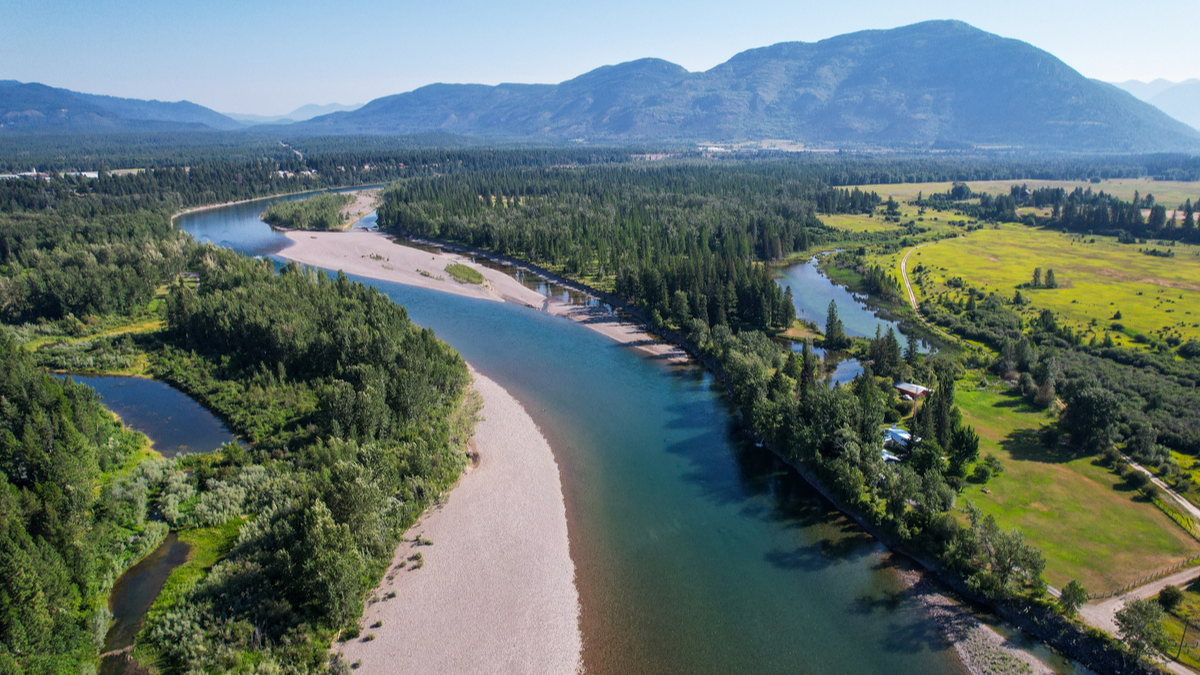Montana Fish, Wildlife & Parks officials in northwest Montana are considering instituting “hoot owl” fishing restrictions for the first time on the Flathead River, as well as others, as warm weather and low streamflows threaten the region’s trout, particularly westslope cutthroat and bull trout.
Hoot owl restrictions are common in other parts of the state and have already been implemented on sections of the Beaverhead, Bitterroot, Jefferson, Lower Madison and Sun rivers this summer. When the restrictions are in effect, anglers can be fined if they are caught fishing between 2 p.m. and midnight.
“We’ve never had to do it up here because we’ve always been blessed with cold water, but this summer has been different,” said Dillon Tabish, regional communication and education program manager for FWP Region 1.
Mike Hensler, regional fisheries manager for Region 1, said biologists are particularly worried about heat-induced stress of wild trout in all three forks of the Flathead River, the main stem of the Flathead upstream from Evergreen, the Swan River and the Thompson River. Of those bodies of water, only the Thompson River has ever had hoot owl restrictions.
A thin snowpack followed by a warm spring has resulted in historically low water flows throughout northwest Montana. According to FWP, the water flows in the North, South and Middle forks of the Flathead River are all roughly a third of what they would normally be this time of year. Flathead Lake is currently two feet below its normal full pool, wreaking havoc on boaters and businesses that rely on the lake.
“We’ve never had to do it up here because we’ve always been blessed with cold water, but this summer has been different.”
Dillon Tabish, regional communication and education program manager for FWP Region 1
FWP officials said implementing hoot owl restrictions would depend entirely on weather and how many people are fishing. For restrictions to be instituted, streamflow conditions must be deteriorating, fishing pressure (the number of people on the water) must be high and the temperature for a specific section of river must hit a certain point for three days in a row. In the case of the North Fork of the Flathead River, that temperature is 66 degrees; on Thursday, it hit 66.7 degrees. If enough of those criteria are met, FWP will go to the Montana Fish and Wildlife Commission to ask for restrictions or closures.
No river has ever been completely closed to fishing in northwest Montana, Hensler said, and he was hopeful it wouldn’t happen this summer.
“I don’t think we’ll have to shut down a fishery, but I also say ‘never say never,’” Hensler said.
To reduce stress on fish, FWP encourages anglers to land fish quickly, to keep them in the water as much as possible by limiting or even avoiding taking photos of them, and to remove hooks gently. If people see sick or dead fish, they are encouraged to report them online.
The National Weather Service in Missoula predicts warm weather through the weekend, with temperatures above 100 degrees in parts of western Montana on Saturday and Sunday.

In-depth, independent reporting on the stories impacting your community from reporters who know your town.
LATEST STORIES
BLM to end new coal leasing in Powder River Basin
The agency’s decision comes amidst declining coal production nationally and moves by the Biden administration to curtail the power sector’s contribution to climate change.
What we know about the arrest of state superintendent candidate Sharyl Allen
How the recent arrest of Harrison School Superintendent Sharyl Allen ties to her Republican primary bid for state superintendent and to a state investigation into teacher misconduct.
Attorney General Knudsen accused of soliciting ghost competitor for campaign finance purposes
Incumbent Attorney General Austin Knudsen and his opponent in the GOP primary face political practices complaints following reports that Knudsen acknowledged recruiting an opponent so he could accept larger donations.

